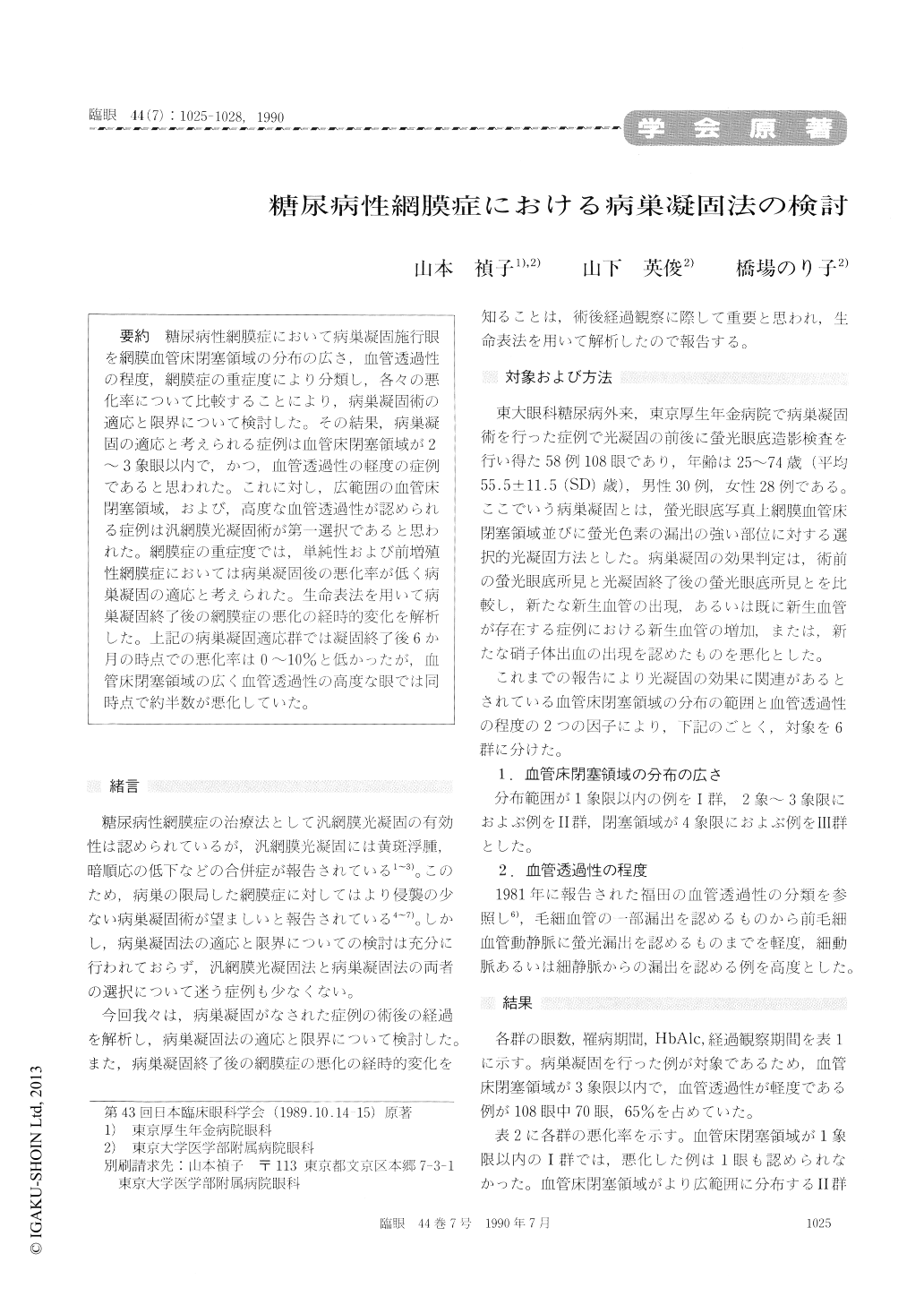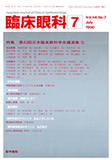Japanese
English
- 有料閲覧
- Abstract 文献概要
- 1ページ目 Look Inside
糖尿病性網膜症において病巣凝固施行眼を網膜血管床閉塞領域の分布の広さ,血管透過性の程度,網膜症の重症度により分類し,各々の悪化率について比較することにより,病巣凝固術の適応と限界について検討した。その結果,病巣凝固の適応と考えられる症例は血管床閉塞領域が2〜3象眼以内で,かつ,血管透過性の軽度の症例であると思われた。これに対し,広範囲の血管床閉塞領域,および,高度な血管透過性が認められる症例は汎網膜光凝固術が第一選択であると思われた。網膜症の重症度では,単純性および前増殖性網膜症においては病巣凝固後の悪化率が低く病巣凝固の適応と考えられた。生命表法を用いて病巣凝固終了後の網膜症の悪化の経時的変化を解析した。上記の病巣凝固適応群では凝固終了後6か月の時点での悪化率は0〜10%と低かったが,血管床閉塞領域の広く血管透過性の高度な眼では同時点で約半数が悪化していた。
We compared the effects of focal photocoagula-tion with panretinal photocoagulation (PRP) in 108 eyes, 58 patients, with diabetic retinopathy of vary-ing severities. The eyes were classified into 6 groups by grading the extent of capillary nonper-fusion into 3 subgroups and the intensity ofextravasation of dye into 2 when seen by fluores-cein angiography.
Focal photocoagulation resulted in lesser rate of progression of retinopathy in eyes with localized capillary nonperfusion involving less than 3 guan-drants of the fundus and in those with mild extravasation. Retinopathy progressed at a higher incidence in eyes with extensive capillary nonper-fusion and profuse extravasation.

Copyright © 1990, Igaku-Shoin Ltd. All rights reserved.


